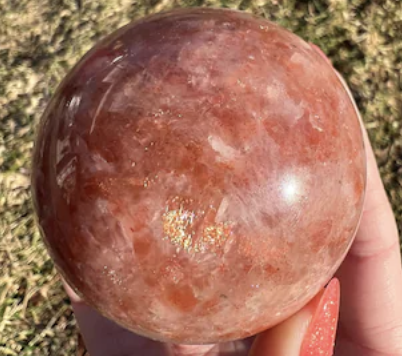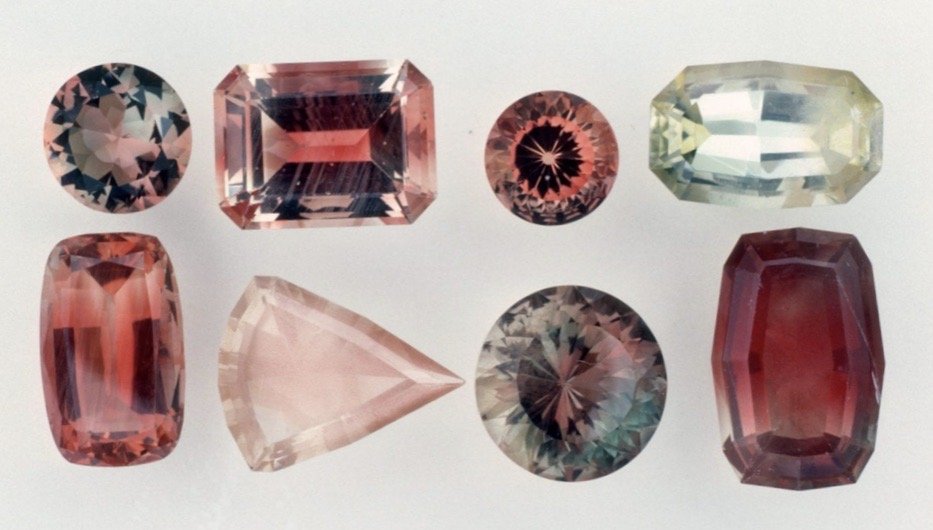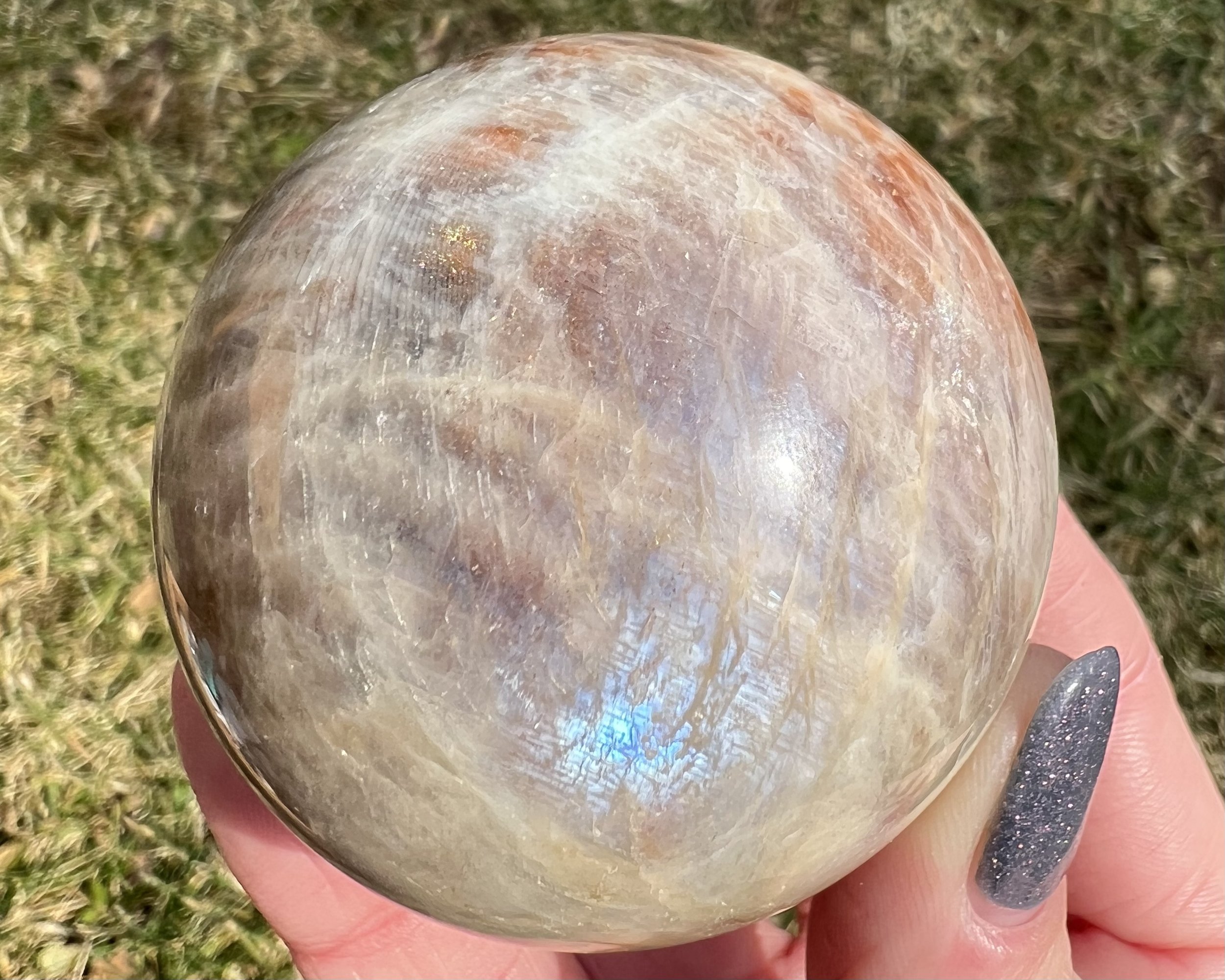
Sunstone and Sunstone and Sunstone
If you look up Sunstone in a google search, you will see many stones that vary wildly in appearance. That is because not all Sunstones are quite the same stone. There are three main types of Sunstones. One is usually mostly orange and more opaque and often has sparkly stuff in it. Another has more sparkles, more rainbows and less orange. The last is more transparent to translucent and may even change colors. They are all feldspars, and have inclusions that cause Aventurescence (also known as schiller) which is "sparkly, metallic-looking luster caused by flat, reflective inclusions" according to GIA. Their mineralogical name is Aventurine Feldspar. Beyond that, these stones have lots of differences.
The Sunstone most commonly seen by the average crystal enthusiast is probably the bright sparkly varieties of the Oligoclase and Orthoclase Feldspar groups. One Oligoclase Feldspar type of Sunstone you've probably seen is from India, cut and polished into spheres and hearts and palm stones. They have bright orange color with shiny Hematite platelets in a variety of colors that give it the trade name "Confetti Sunstone." There are similar varieties of this Sunstone from around the world including Tanzania and Canada.
In Australia, there is a type of Orthoclase Sunstone with long shiny plates of Hematite and Magnetite with rainbow iridescence that can intersect, lovingly called "Rainbow Lattice Sunstone." In these Sunstones the inclusions are hosted in a more translucent or even transparent Orthoclase that shows off the beautiful inclusions in them. In the bottom of this image is another example of an Orthoclase Sunstone- this one from Russia, where the plates are short and hexagonal but also very colorful.
The third type of Sunstone is most famously called Oregon Sunstone. It is the official state gemstone of Oregon. It is technically a type of Labradorite which has Copper inclusions (rather than Hematite ones) that cause its aventurescence. The first recorded occurrence of these stones was by Native Americans who used them in trade and sometimes buried them with their dead. Some Oregon Sunstones have pleochroism, or change colors at different angles. They occur in a range of colors including orange, red, yellow, green and blue.
These Sunstones are the only kind that are faceted often. In the late 1800s Tiffany & Co owned the first commercial mine for Oregon Sunstones which they marketed as "Plush Diamonds" but it didn't catch on as well as they'd hoped and at some point later on they sold the claims. Sunstones are not as popular as other stones in jewelry, but their natural beauty tends to capture the hearts of those who see them up close and in person.
There are mentions of a "sunstone" used by Vikings to navigate the seas in cloudy weather before the invention of the magnetic compass. This "sunstone" however was not Sunstone. We don't know for sure what stone they were using, but a shipwreck from the English Channel that sank in the 1500s had a crystal among its navigation tools, a piece of Optical Calcite- also called Iceland Spar- which is known for its diffraction of light. Many believe that it was pleochroic Iolite, which changes color depending on the angle of light as shown here. Both could be used to determine the position of the sun.
I hope you enjoyed my explanation of Sunstones! You can find several kinds of Sunstones including Rainbow Confetti Sunstones and even Moonstone & Sunstone together, in my Etsy shop. Thanks for reading! -Shawna









